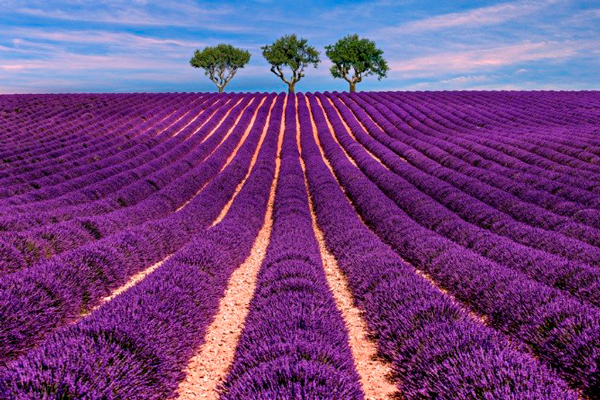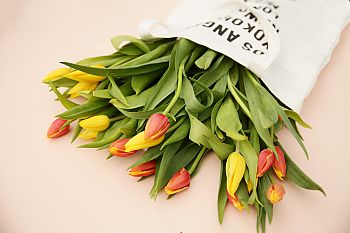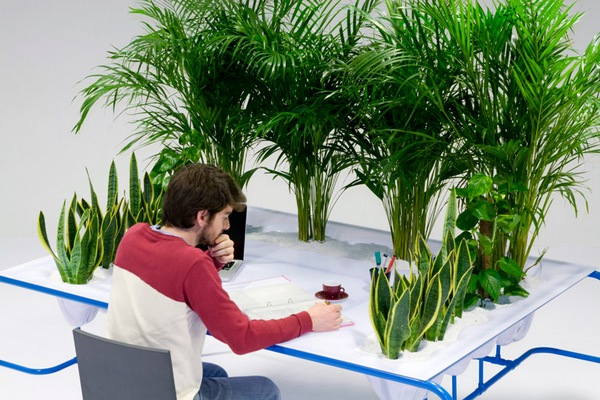Agave
 The extensive genus of agaves unites approximately 300 species native to North and Central America. Agaves are very undemanding plants. The name was given in honor of Agave – the daughter of one of the ancient mythical kings.
The extensive genus of agaves unites approximately 300 species native to North and Central America. Agaves are very undemanding plants. The name was given in honor of Agave – the daughter of one of the ancient mythical kings.
Agave is a fairly powerful plant with succulent leaves. The leaves have an aquiferous tissue, which allows them to spend moisture during dry periods very economically. The diameter of the leaf rosette reaches 2.5 m. The leaves are large, solid, fleshy, wide or narrow, ending in strong spines; most species have strong bent or straight thorns at the edges of the leaves. The color of the leaves is gray, green, bluish-green, in some species yellow or white stripes or whitish threads are split along the edges of the leaves, split off from the edges. The leaves are covered with a thick waxy coating.
Agave blooms once in a lifetime – after flowering it dies, leaving numerous root offspring. A high peduncle (up to 10 m) appears from the middle of the outlet and bears several thousand (2 to 8) beautiful bell-shaped flowers collected in panicled inflorescences. Indoor plant never blooms.
Conditions of detention and care for azalea:
Lighting
Agaves love sunny outdoor locations: balconies or open windows
Temperature: In winter, they feel great at a temperature that we could only tolerate in winter coats, 4-10 ° C. Even hardened agaves suffer from lower temperatures. Therefore, in winter it is better to keep it in cool frost-free rooms.
After the danger of returning frost has passed, these spiny creatures are taken out to a balcony, terrace or garden, where there is a lot of air and light.
Watering
In summer, plants are watered sparingly, but regularly. With an excess of watering, the leaves become soft, pale and droop, at which point the rotting of the roots begins. Agaves can easily tolerate a lack of moisture, like all succulent plants, than its excess.
Azalea propagation
Agave propagates by seeds, offspring, cuttings of rhizomes. Siblings are separated from the mother plant and planted in a separate pot. Cuttings of rhizomes are cut so that each has at least one kidney, left for withering for 2-3 hours, sprinkled with crushed charcoal, planted in a box with sand for rooting. In the first year of vegetation, young agaves form 4-6 leaves, in the second – 7-9, in the third – 10-12 leaves. Easily propagated by seeds, root and stem offspring, daughter processes. Seeds collected in nature are sown in February-March to a depth of 0.5-1 cm. At a temperature of 20-25 ° C, the seeds germinate within 5-7 days. After the emergence of seedlings, they are planted in 6-centimeter pots, after a year in – 8-9-centimeter. Subsequently, transplanted every 2-3 years.
Transfer
For planting, you can use ready-made soil for succulents. Good drainage is required. When planting, make sure that the root collar is higher than the soil level. Pests: Of the pests, thrips, scale insects, and mealybugs are the most dangerous for agave. With excessive watering, gray rot and root decay may occur.
Agave species:
Agave americana
The most common in the culture was American agave (Agave americana).
American Agave is a perennial succulent with thick leaves collected in a basal rosette of 10-30 pieces. The homeland of this species is the arid regions of Mexico. Elongated lanceolate leaves, reaching a length of 150 cm, are painted in a bluish-green color with a waxy coating. The base of the leaf blade is expanded, the top is crowned with a sharp spike.
Light: bright sun. Agave is placed indoors, most of the time flooded with sunlight
Temperature: Agave loves warm air. The plant can be taken out to the balcony, at least 2 ° C in winter
Humidity: in the summer, agave is watered sparingly, in winter, watering is reduced to a minimum.
Large-stalked agave
Agave macroacantha
This decorative, slowly growing growing type of agave from Mexico has very strong spikes. Grows up to 3 m.
Light: bright sun. Agave is placed indoors, most of the time flooded with sunlight.
Temperature: Agave loves warm air. The plant can be taken out to the balcony, in the winter 5-10 ° C
Humidity: in the summer, agave is watered sparingly, in winter, watering is reduced to a minimum or not watered at all.
Queen agave
Agave victoriae-reginae
This decorative look from Mexico will grow with a width of rosettes from 30 to 50 cm. The hard leaves of the plant are arranged vertically and painted in a muted green color.
Light: bright sun. Agave is placed indoors, most of the time flooded with sunlight.
Temperature: Agave loves warm air. The plant can be moved to the balcony, at least 10 ° C in winter
Humidity: in the summer, agave is watered sparingly, in winter, watering is reduced to a minimum.




